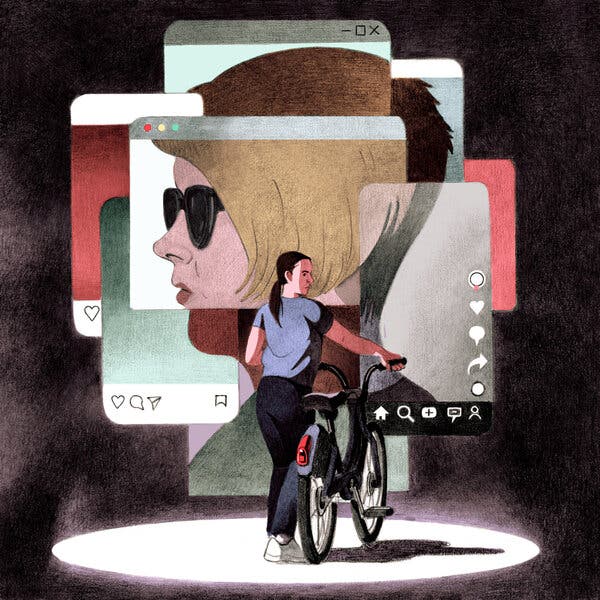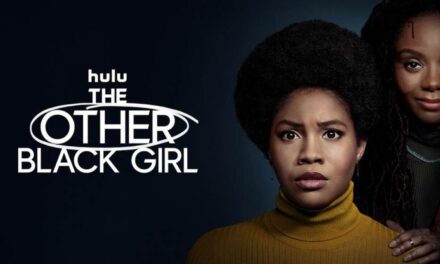More from our inbox:

To the Editor:
Re “The Impossible Bind of the Karen Label,” by Pamela Paul (column, July 29), about the backlash against a pregnant white woman who argued with Black teenagers over a rental bike in a viral video:
Being called a Karen is only the latest slur used against women to shame and silence us. What started as a valid discussion about white female privilege quickly morphed into a demeaning catchall term that reinforces the time-tested trope of women as demanding, difficult and overly emotional.
These negative gender stereotypes hit a raw chord for women because they are all too familiar. History is littered with them. So insidious are these labels, researchers have coined the term “the abrasiveness trap” to describe their effects. Women’s leadership and authority are undermined by these biases, and that contributes to pay inequity and taints careers. For women of color, the intersection of race and “the abrasiveness penalty” is known as the “double bind.”
Women divert time and energy to maneuvering around these stereotypes and to dispelling the misplaced notions of competence, emotional strength and resilience.
It’s time to challenge this insidious stereotype. Let every woman named Karen have her name back. If anyone tells you to stop complaining, you’re on the right track.
Sonia Ossorio
New York
The writer is the executive director of Women’s Justice NOW.
To the Editor:
Pamela Paul likens this internet meme that challenges white women’s entitled position to a racial slur and goes to great lengths to redeem the reputation of Sarah Comrie, the woman involved in the dispute.
However, what Ms. Paul’s column fails to comprehensively address is the way that our entire society — from the media to police to the courts — is geared toward believing the accounts of women like Ms. Comrie and disregarding the accounts of young Black teenagers.
Jessie Daniels
New York
The writer is a sociology professor at Hunter College and the author of “Nice White Ladies: The Truth About White Supremacy, Our Role In It, and What We Can Do to Help Dismantle It.”
To the Editor:
I read the column about Sarah Comrie, and I am wondering if Pamela Paul viewed the same video I did. You can infer all you want about her intentions, but please don’t try to excuse away her culpability.
She was the adult in the situation. If she felt threatened or “bullied” by those young men, she should have walked away. Instead she did as countless white women have over time: weaponize her tears and sense of entitlement and escalate the conflict. Did you at any point notice how quickly the tear ducts shut off once she thought she had a sympathetic audience?
Those young men have been categorized as thugs and much worse since this incident happened, yet I don’t see a Times Opinion piece asking for grace for them.
R. Corbett
Dover, Del.
To the Editor:
There is another aspect to the response to this viral video that I feel deserves an article of its own. Women cry.
Why do we not recognize that crying is a valid expression of emotion? Why do we shame women for showing emotion?
I cry when I am tired, when I am in an overwhelming situation and sometimes when I am merely confused. All of these emotions I saw in the short video. And yet, she was immediately ridiculed and accused of attempting to manipulate the situation by crying.
How has tearing up become so immediately seen as manipulation?
Lauren McGowan
La Mesa, Calif.
To the Editor:
While the real culprits in Sarah Comrie’s vilification are the online viewers and our abominable online media ecosystem, the conflict could have been avoided if both parties had communicated more effectively.
First, instead of grabbing hold of the bike, the teenagers could have explained they were returning the bikes briefly and intended to re-rent them (if that was indeed the case). Second, instead of calling for help, Ms. Comrie could have shared her own situation (admittedly not a New Yorker’s first go-to). Or third, the teens, understanding that she was older than them and pregnant, could have offered her the bike, like offering a seat on the bus.
Interpersonal communication can supply a solution.
Ellen McKinley
Princeton, N.J.
Racial Bias in U.S. Immigration Policy
To the Editor:
I am writing to express my deep concern about the racial bias evident in U.S. immigration policy, specifically the stark contrast between the red carpet treatment afforded to white Ukrainians and the deplorable indignities endured by nonwhites at the U.S.-Mexico border. This disparity is a glaring example of the systemic racism embedded in our immigration system.
Nonwhite migrants, predominantly from Latin America, endure harrowing conditions, including overcrowded detention centers, separation from their families and a lack of access to basic necessities like food, water and medical care. They face indefinite detention, often without due process, and are subjected to inhumane treatment.
In contrast, white Ukrainian migrants receive a markedly different reception. They are often granted expedited processing, provided with access to legal assistance and are not subjected to the same degrading conditions faced by their nonwhite counterparts.
Racial bias in U.S. migrant policy extends beyond the treatment at the border. Our current racial policies perpetuate inequities and reinforce discriminatory practices that hinder social progress and perpetuate a cycle of discrimination for nonwhite people.
As a nation that prides itself on diversity, inclusivity and the pursuit of justice, we must confront and rectify the racial bias ingrained within our immigration policies. We must strive for a fair and just system that treats all individuals, regardless of their racial or ethnic background, with dignity and respect.
Jagjit Singh
Los Altos, Calif.
Melania Trump’s Avoidance of the Spotlight
To the Editor:
Re “The Purposely Private Days of Melania Trump” (front page, July 27):
As someone who had the honor of collaborating with her office during my time in the Trump administration, I disagree with the portrayal of the former first lady. Mrs. Trump’s avoidance of the spotlight is not a recent phenomenon, nor does it make her a hermit.
As press secretary for the White House Office of National Drug Control Policy, I witnessed the personal side of Mrs. Trump. She cleared her calendar to spend an afternoon with Americans struggling with addiction. Her first solo excursion from 1600 Pennsylvania Avenue amid the Covid pandemic was a surprise visit to a New Hampshire hospital’s neonatal abstinence syndrome unit, where her compassion was evident.
In 2021, hundreds of fans packing the Mar-a-Lago ballroom welcomed Mrs. Trump with a roaring ovation at the Log Cabin Republicans gala. I know because I was there.
Public engagements don’t always take place in front of cameras. Given the hostile press she endured from 2015 to 2021, is it any wonder the media hasn’t been atop Mrs. Trump’s invite list of late?
Gregory T. Angelo
Washington
The writer is president of the New Tolerance Campaign, a watchdog organization that fights intolerance.




